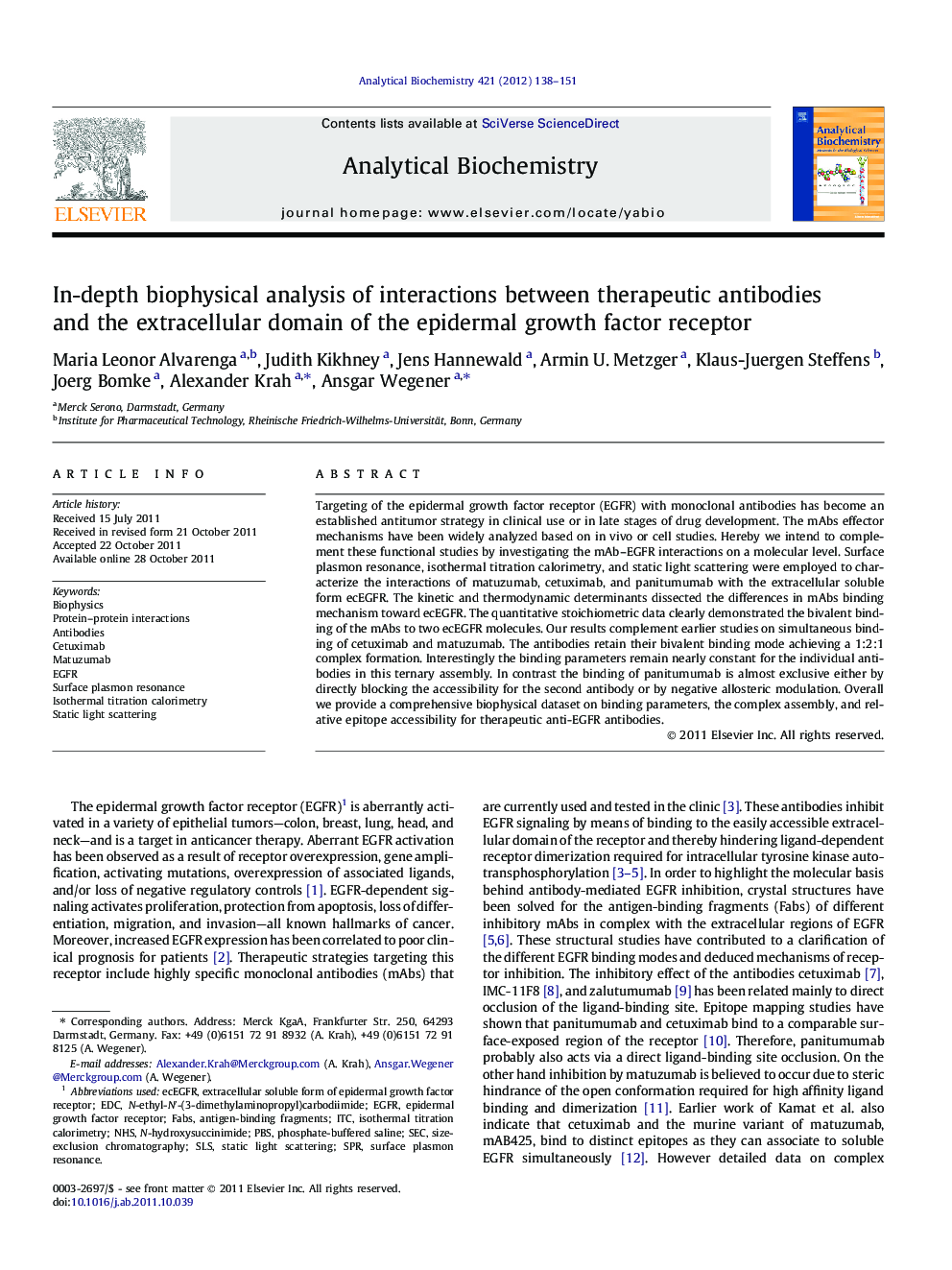| Article ID | Journal | Published Year | Pages | File Type |
|---|---|---|---|---|
| 1173260 | Analytical Biochemistry | 2012 | 14 Pages |
Targeting of the epidermal growth factor receptor (EGFR) with monoclonal antibodies has become an established antitumor strategy in clinical use or in late stages of drug development. The mAbs effector mechanisms have been widely analyzed based on in vivo or cell studies. Hereby we intend to complement these functional studies by investigating the mAb–EGFR interactions on a molecular level. Surface plasmon resonance, isothermal titration calorimetry, and static light scattering were employed to characterize the interactions of matuzumab, cetuximab, and panitumumab with the extracellular soluble form ecEGFR. The kinetic and thermodynamic determinants dissected the differences in mAbs binding mechanism toward ecEGFR. The quantitative stoichiometric data clearly demonstrated the bivalent binding of the mAbs to two ecEGFR molecules. Our results complement earlier studies on simultaneous binding of cetuximab and matuzumab. The antibodies retain their bivalent binding mode achieving a 1:2:1 complex formation. Interestingly the binding parameters remain nearly constant for the individual antibodies in this ternary assembly. In contrast the binding of panitumumab is almost exclusive either by directly blocking the accessibility for the second antibody or by negative allosteric modulation. Overall we provide a comprehensive biophysical dataset on binding parameters, the complex assembly, and relative epitope accessibility for therapeutic anti-EGFR antibodies.
